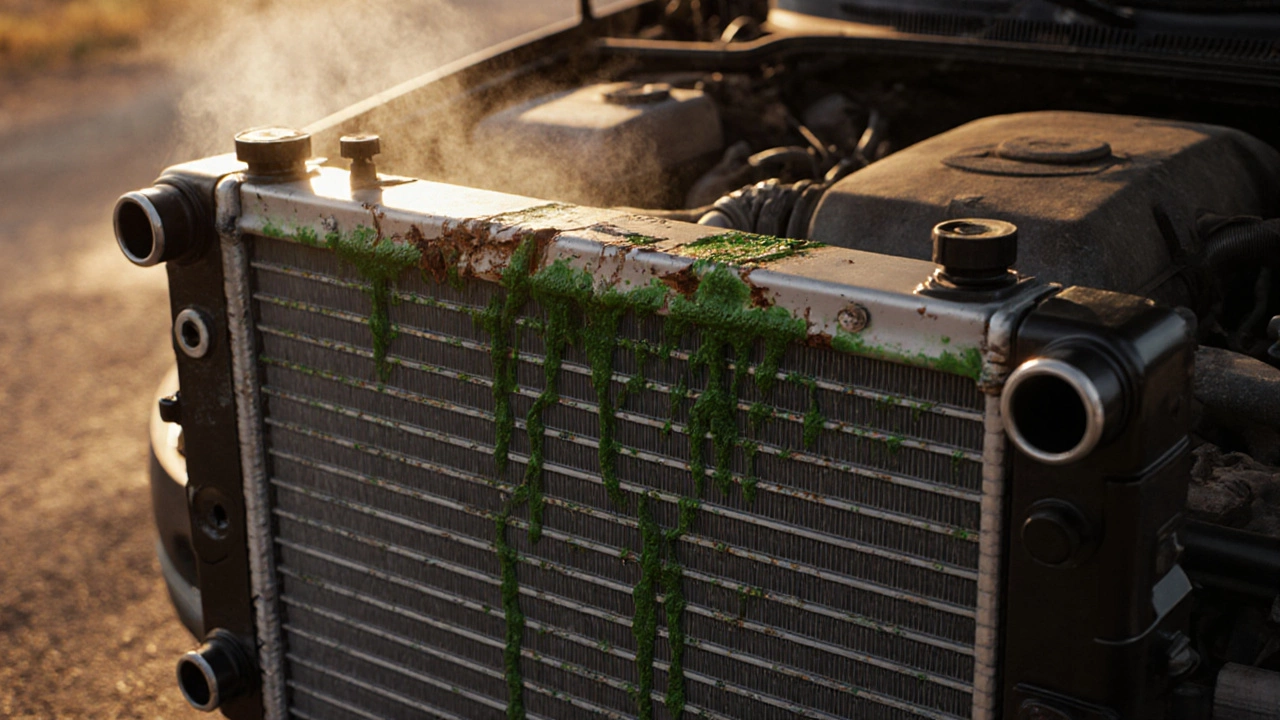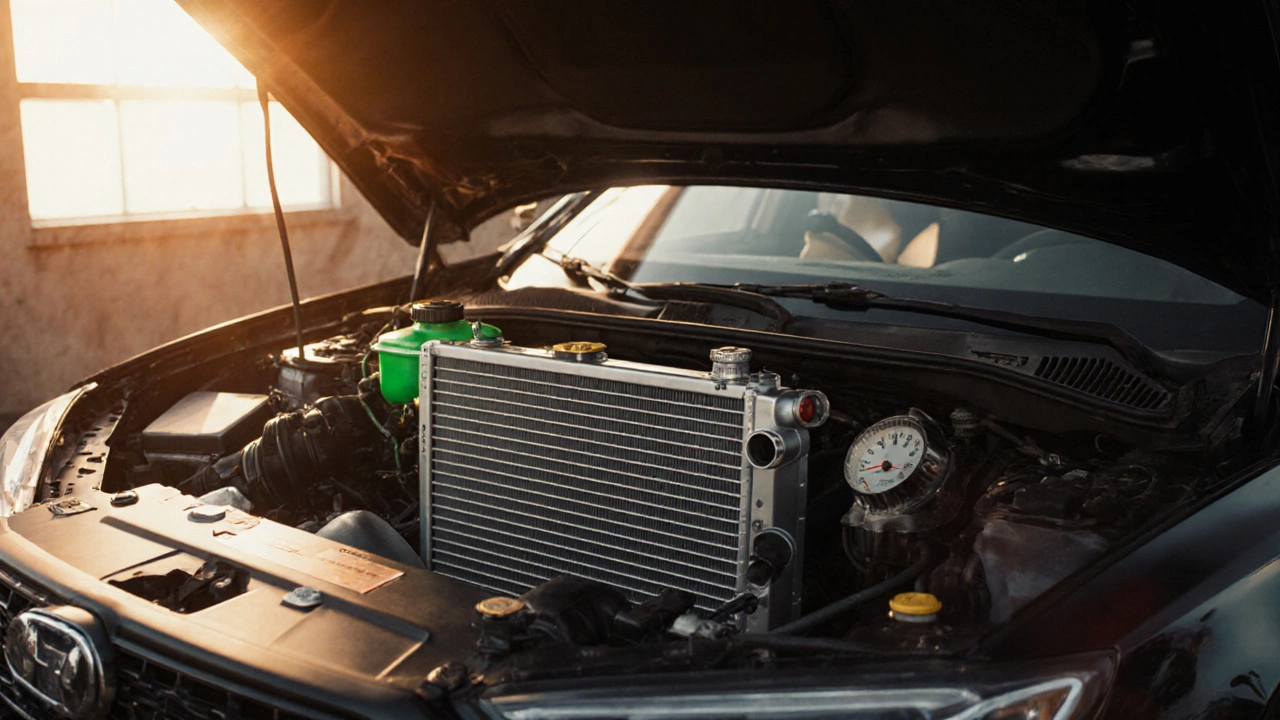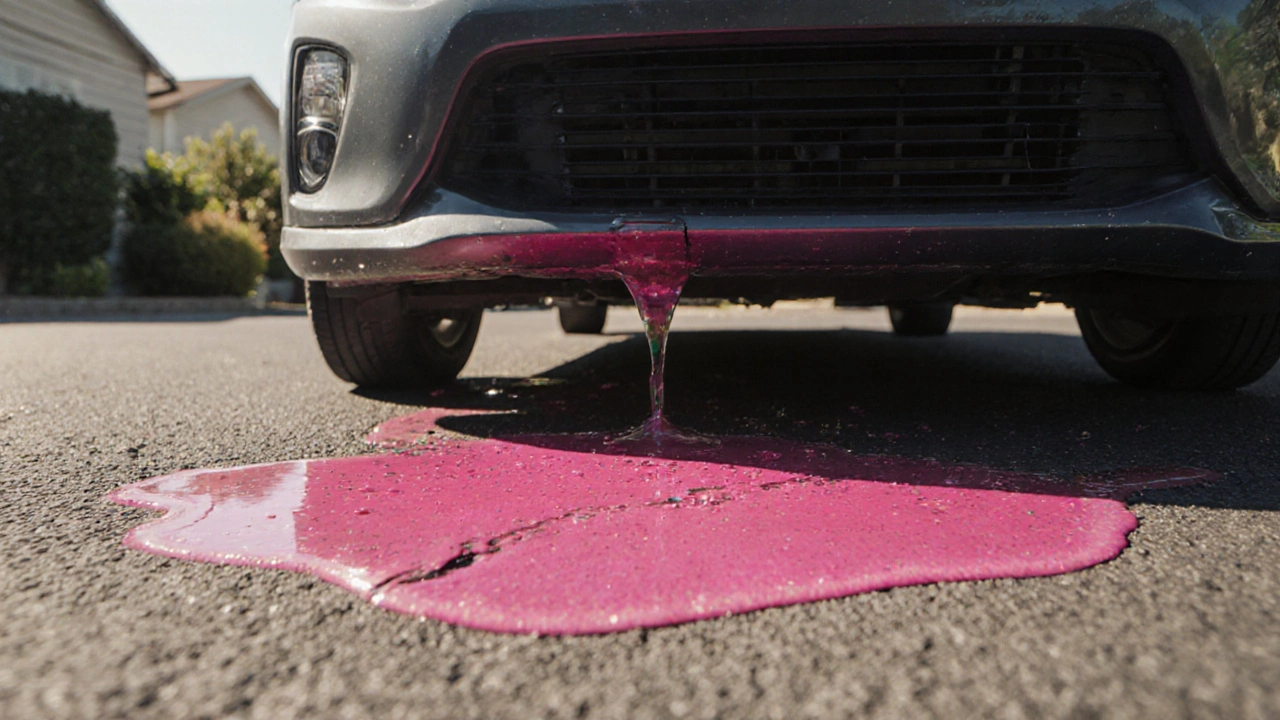Radiator Maintenance: How to Keep Your Car from Overheating
When your car’s radiator, a key part of the engine cooling system that circulates coolant to manage heat. Also known as an engine cooler, it’s one of the most overlooked but critical parts in your vehicle. If it fails, your engine can overheat in minutes — and that’s not a minor repair. It’s a $2,000+ nightmare. Most people don’t think about their radiator until the temperature gauge spikes. But by then, it’s often too late. Good radiator maintenance isn’t about fancy tools or garage magic. It’s about checking a few simple things before things go wrong.
It’s not just the radiator itself that matters. The coolant, the liquid that flows through the radiator and engine to absorb and carry away heat. Also known as antifreeze, it’s the lifeblood of your cooling system. Old or dirty coolant turns acidic, eats away at metal parts, and clogs small passages. Most manufacturers say to flush it every 30,000 to 60,000 miles, but if you drive in stop-and-go traffic or hot climates, you might need it sooner. Then there’s the thermostat, a small valve that controls coolant flow based on engine temperature. Also known as a temperature regulator, it’s cheap to replace but deadly if it sticks shut. A bad thermostat is one of the top reasons cars overheat — and it’s easy to miss because the engine might run fine at first.
You don’t need a mechanic to spot early radiator trouble. Look for puddles under your car — especially green, orange, or pink fluid. That’s a coolant leak, and it’s not normal. Check the radiator cap for cracks or looseness. A weak cap won’t hold pressure, and without pressure, coolant boils at a lower temperature. Listen for gurgling noises when the engine is hot — that’s air trapped in the system, often from a slow leak or low fluid. And don’t ignore the warning lights. Even if your car seems fine, a check engine light or temperature alert is your radiator screaming for help.
Some people think electric cars don’t need radiators. But that’s not true. Even EVs use them to cool batteries and motors. The same rules apply: check fluid levels, look for leaks, and keep the system clean. Whether you drive a 20-year-old sedan or a new hybrid, your cooling system works the same way. The only difference? You’re less likely to notice it failing until it’s too late.
There’s no magic fix for radiator problems. No additive will save a cracked tank. No miracle oil will fix a failing water pump. The only reliable fix is regular checks, timely replacements, and knowing when to act. The posts below show you exactly how to inspect your radiator, spot common failures before they happen, and avoid the expensive mistakes most drivers make. You’ll find step-by-step guides on checking coolant levels, testing for leaks, understanding why radiators fail, and what parts to replace when things go wrong. No fluff. No theory. Just what you need to keep your car running cool — and safe.

What Is the Life Expectancy of a Car Radiator?
Most car radiators last 8-12 years, but neglect can cut that in half. Learn the signs of failure, how to extend radiator life, and when to replace it before engine damage happens.
November 18 2025
How Long Do Car Radiators Last? Expert Guide to Lifespan and Maintenance
Learn how long car radiators typically last, what affects their lifespan, and how to maintain them to avoid costly replacements.
October 19 2025
Signs Your Car Radiator Needs Replacing - How to Spot Radiator Problems
Learn how to spot the signs that your car radiator needs replacing, from coolant leaks to overheating, and follow a step-by-step diagnostic guide.
October 12 2025